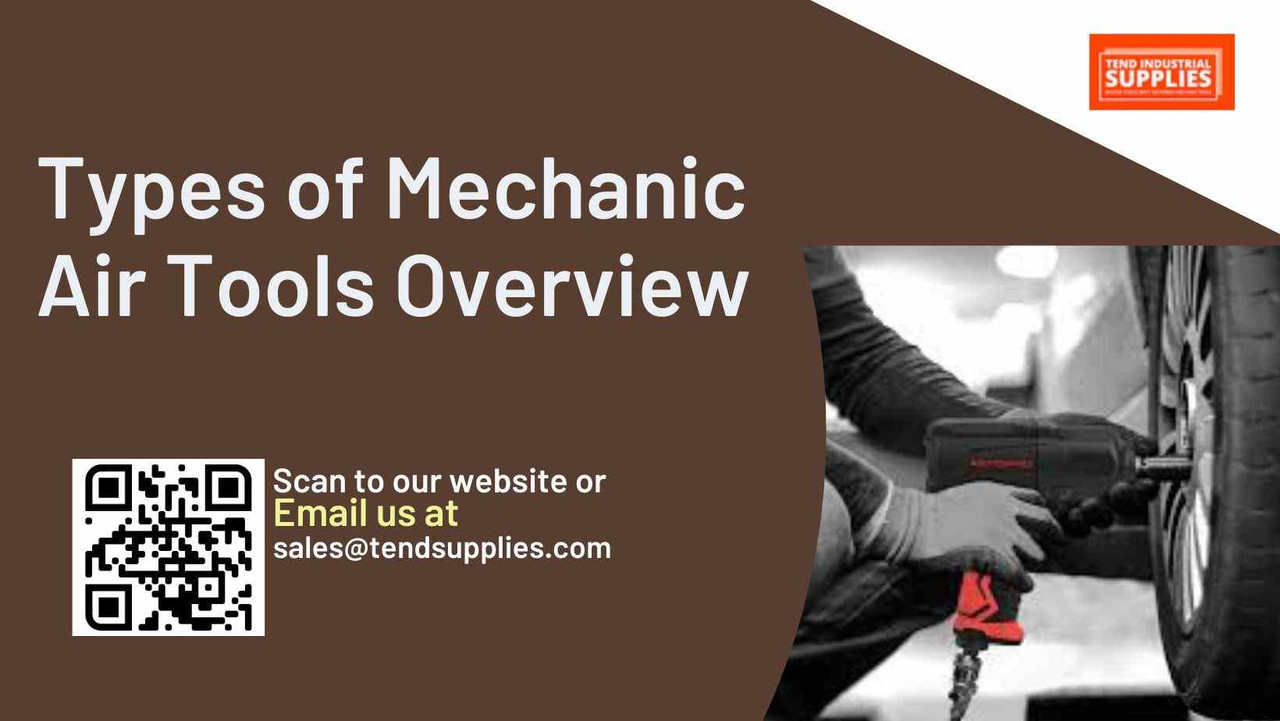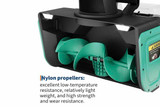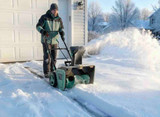Types of Mechanic Air Tools Overview
Air tools, also known as pneumatic tools, have become crucial in the field of automotive mechanics. They offer exceptional power, precision, and efficiency, making them essential for any serious mechanic. Unlike traditional manual or electric tools, air tools are powered by compressed air, providing a higher torque output and often lasting longer due to fewer moving parts. This makes them particularly valuable in demanding automotive environments where reliability and performance are critical.
The evolution of air tools in the automotive industry has been significant. From their early adoption in the mid-20th century to the advanced, ergonomic designs available today, air tools like air wrenches have continually adapted to meet the growing needs of mechanics. Whether it's for loosening stubborn bolts or painting a vehicle with precision, air tools play a vital role in maintaining and repairing vehicles efficiently.
Categories of Mechanic Air Tools
1. Impact Wrenches
Impact wrenches are one of the most common air tools found in a mechanic's workshop. They are designed to deliver high torque output with minimal effort, making them ideal for tasks such as loosening or tightening lug nuts, bolts, and other fasteners. Impact wrenches come in various sizes, with the most popular being the 1/2 inch, 3/8 inch, and 1/4 inch drive sizes.
The key features to look for in an impact wrench include torque capacity, speed, and durability. Higher torque is essential for heavy-duty applications, while variable speed settings allow for greater control. Durability is also crucial, as these tools are often subjected to harsh conditions in a workshop. Brands like Ingersoll Rand and Snap-on are renowned for their high-quality impact wrenches, offering reliable performance and longevity.
2. Air Ratchets
Air ratchets are another staple in automotive repair, particularly useful in tight spaces where a standard ratchet might not fit. These tools provide the convenience of a powered ratchet, reducing the effort required to tighten or loosen bolts in confined areas. Compared to their manual counterparts, air ratchets offer faster operation, saving valuable time during repairs.
While air ratchets are incredibly handy, it's important to note that they are best suited for light to medium-duty tasks. They typically generate less torque than impact wrenches, making them ideal for tasks such as working on engine covers, interior fasteners, or dashboard components. Mechanics often appreciate air ratchets for their compact size and ease of use in complex assemblies.
3. Air Drills
Air drills are preferred in automotive settings for their durability and consistent performance. These tools are designed for drilling holes in metal, wood, and plastic, making them versatile for various applications in a workshop. There are different types of air drills, including pistol grip, straight, and angle drills, each suited for specific tasks.
Pistol grip drills are the most common, offering a good balance of power and control. Straight drills are typically used for more precise work, while angle drills are perfect for accessing hard-to-reach areas. Air drills are especially beneficial in environments where electric drills might overheat or fail, as they can operate continuously without losing power.
4. Air Hammers/Chisels
Air hammers, also known as air chisels, are powerful tools used for cutting, shaping, and removing material. In automotive repair, they are often used for tasks such as cutting exhaust pipes, removing rivets, or separating ball joints. The tool's versatility comes from the variety of attachments available, including chisels, punches, and splitters.
Safety is paramount when using air hammers due to their high impact force. Proper personal protective equipment (PPE), such as gloves and eye protection, should always be worn. Additionally, users should ensure the correct attachment is securely in place before operation to prevent accidents.
5. Air Sanders/Grinders
Air sanders and grinders are essential for surface preparation, whether it's smoothing out welds, removing paint, or polishing surfaces. These tools are favored in automotive workshops for their power and durability, often outperforming their electric counterparts.
There are several types of air sanders and grinders, including orbital, disc, and belt sanders, each designed for specific tasks. Orbital sanders are great for fine finishing, while disc sanders are used for more aggressive material removal. Belt sanders are ideal for large, flat surfaces. The consistent power and lightweight nature of these tools make them indispensable for automotive refinishing work.
Choosing the Right Air Tool for Your Workshop
When selecting air tools for your workshop, it's important to consider the specific tasks you'll be performing most frequently. Here are some key factors to keep in mind:
1. Power and Torque Requirements:
- Different tasks require different levels of power and torque. For instance, removing rusted bolts may need a high-torque impact wrench, while assembling small parts may only require a lower torque air ratchet. Knowing the torque requirements of your most common tasks will help you choose the right tool.
2. Air Pressure and Flow:
- Ensure that your air compressor can deliver the necessary pressure (measured in PSI) and flow (measured in CFM) to power your tools effectively. Tools like impact wrenches require a higher CFM, whereas airbrushes need lower CFM. Matching your compressor’s capabilities with your tools is crucial for optimal performance.
3. Ergonomics and Comfort:
- Ergonomics play a vital role, especially if you're using air tools for extended periods. Look for tools with comfortable grips, lightweight designs, and balanced weight distribution. Features like vibration dampening can also reduce fatigue and improve precision.
4. Durability and Build Quality:
- Investing in high-quality air tools can save you money in the long run. Look for tools made with durable materials like composite or metal housings that can withstand the rigors of daily use. Reputable brands like Ingersoll Rand, Snap-on, and Chicago Pneumatic are known for their reliability and longevity.
5. Versatility and Attachments:
- Some air tools come with various attachments or are compatible with a wide range of accessories, increasing their versatility. For example, air hammers can be used with different chisels, while air sanders may accept various sanding pads or discs. Having versatile tools can reduce the number of tools you need to purchase.
Safety Tips for Using Mechanic Air Tools
Safety is paramount when working with air tools due to their high power and speed. Here are some essential safety tips:
1. Wear Appropriate Personal Protective Equipment (PPE):
- Always wear safety goggles, gloves, and hearing protection when using air tools. Some tasks may also require respiratory protection, especially when sanding or grinding.
2. Inspect Tools Before Use:
- Regularly check your air tools for signs of wear and tear, such as cracks, leaks, or loose parts. Ensure that all connections, especially air hoses and fittings, are secure before operation.
3. Maintain Proper Air Pressure:
- Use a regulator to maintain the correct air pressure for each tool. Operating a tool at too high or too low pressure can damage the tool and compromise safety. Never exceed the manufacturer’s recommended pressure settings.
4. Secure Workpieces:
- Always secure the workpiece using clamps or a vise to prevent it from moving during operation. This helps ensure precision and prevents accidents.
5. Follow the Manufacturer’s Instructions:
- Read and follow the manufacturer’s operating instructions and safety guidelines for each tool. Proper use not only extends the life of your tools but also keeps you safe.
Emerging Trends in Mechanic Air Tools
The world of mechanic air tools is constantly evolving with new technologies and innovations aimed at improving efficiency, safety, and ergonomics. Here are some trends to watch out for:
1. Smart Air Tools:
- The integration of smart technology is beginning to make its way into air tools. Some tools now feature digital interfaces that allow for precise control of torque settings, pressure, and speed. These tools can also monitor usage and provide maintenance reminders, reducing downtime and improving efficiency.
2. Improved Ergonomics:
- Manufacturers are increasingly focusing on the ergonomics of air tools, designing them to reduce user fatigue and injury. Expect to see more tools with advanced grip designs, lighter materials, and vibration-reducing technologies.
3. Eco-Friendly Air Tools:
- As the demand for environmentally friendly products grows, air tools are also seeing advancements in sustainability. This includes tools designed for lower energy consumption and those made from recycled or sustainable materials.
4. Noise Reduction Technologies:
- Noise pollution is a significant concern in workshops, and newer air tools are being designed to operate more quietly. Expect to see advancements in noise reduction technologies, making the workshop environment more pleasant and reducing the need for extensive hearing protection.
5. Modular Systems:
- Modular air tool systems are becoming more popular, allowing mechanics to customize their tools with different attachments and accessories. This not only saves space but also makes it easier to switch between different tasks quickly.
Future of Mechanic Air Tools
As the industry continues to innovate, the future of mechanic air tools looks promising, with several advancements on the horizon:
1. Integration with Artificial Intelligence (AI):
- AI-powered tools may soon be able to learn from their usage patterns, optimizing their performance based on the specific tasks they are used for. This could include automatically adjusting torque or pressure settings to match the requirements of a job, thereby improving efficiency and reducing the likelihood of errors.
2. Enhanced Battery Technology for Cordless Air Tools:
- While traditional air tools are powered by compressors, the future may see more hybrid models that incorporate advanced battery technology. These tools would offer the convenience of cordless operation while maintaining the power and performance of air-driven tools, making them ideal for mobile mechanics and remote job sites.
3. Sustainable Manufacturing Practices:
- As environmental concerns continue to grow, the production processes for air tools are likely to become more sustainable. This could involve the use of eco-friendly materials, reduced energy consumption during manufacturing, and greater emphasis on recycling and reusability.
4. Customizable Tool Interfaces:
- The future may also bring more customizable interfaces for air tools, allowing mechanics to set their preferences for speed, torque, and pressure. These settings could be stored in a digital profile, making it easier to switch between different tools or tasks without the need to manually adjust settings each time.
5. Expansion of Multi-Functional Tools:
- Multi-functional tools that combine the capabilities of several air tools into one are likely to become more prevalent. This would help mechanics save on costs and space while increasing their versatility in the workshop.
FAQs: Mechanic Air Tools
1: What is the most important factor to consider when choosing an air compressor for my tools?
- The most crucial factors are the compressor's pressure (PSI) and flow rate (CFM). Ensure that your compressor meets or exceeds the requirements of your air tools to ensure optimal performance.
2: How do I maintain my air tools to ensure longevity?
- Regular maintenance is key. This includes lubricating the tools according to the manufacturer's instructions, checking for and replacing worn parts, and draining the air compressor's tank to prevent moisture build-up, which can cause rust.
3: Are there any safety concerns specific to using air tools?
- Yes, always wear appropriate personal protective equipment (PPE) such as safety goggles, gloves, and hearing protection. Make sure the air tool is securely connected to the air hose, and never exceed the recommended air pressure.
4: How do smart air tools differ from traditional air tools?
- Smart air tools incorporate digital interfaces and sensors that allow for more precise control of tool settings. They may also offer features like performance monitoring, automatic adjustments, and maintenance alerts, which are not available in traditional tools.
5: Can I use my air tools with any air compressor?
- Not all air compressors are suitable for all air tools. It’s important to match the compressor's PSI and CFM ratings with the requirements of the air tools you plan to use. Using an incompatible compressor can lead to poor tool performance and even damage.
Conclusion
Ready to upgrade your workshop with the latest mechanic air tools? Visit Tend Industrial Supplies to explore our comprehensive selection of air tools, compressors, and accessories. Whether you're a professional mechanic or a DIY enthusiast, our high-quality tools and expert advice will help you achieve the best results.
Need assistance in choosing the right air tools for your specific needs? Contact our knowledgeable team at sales@tendsupplies.com for personalized recommendations and support. Don't miss out on the latest innovations in air tools—shop now and take your workshop to the next level with Tend Industrial Supplies!







